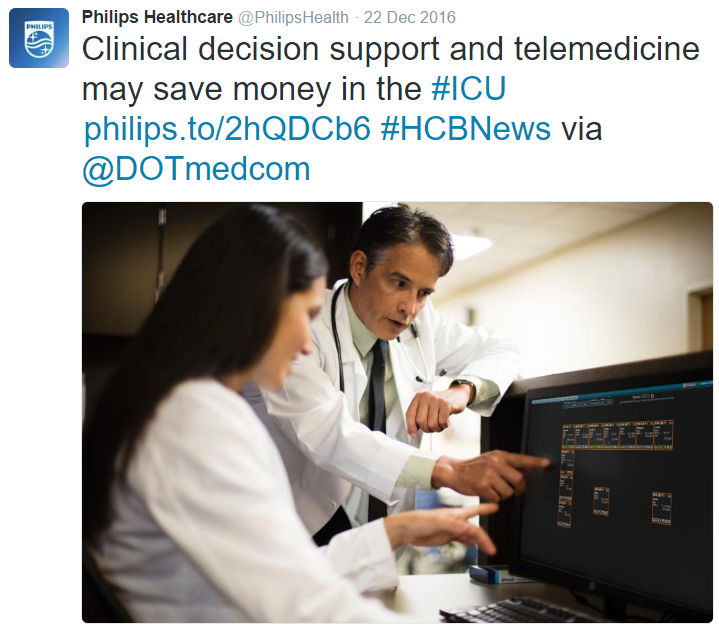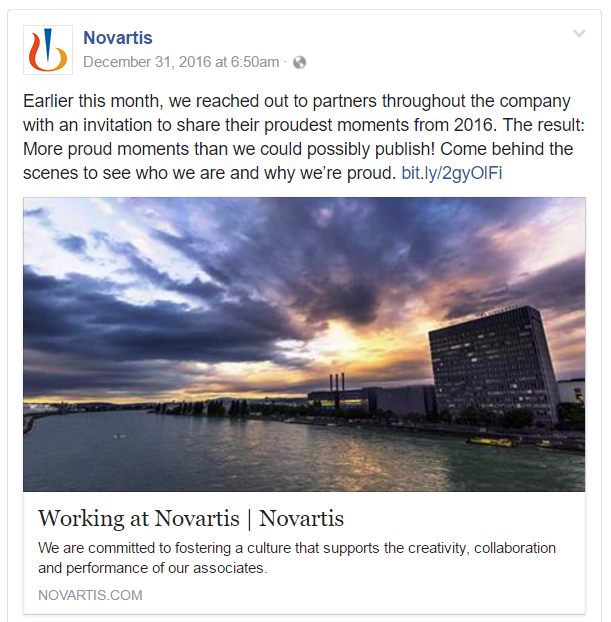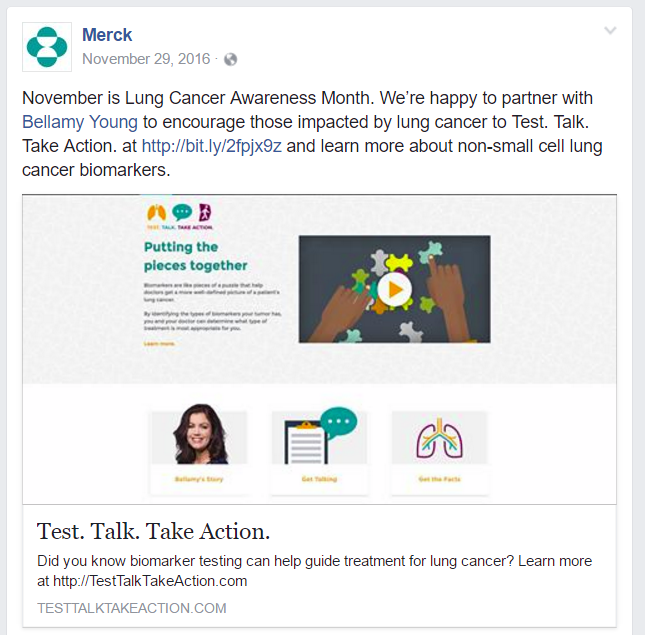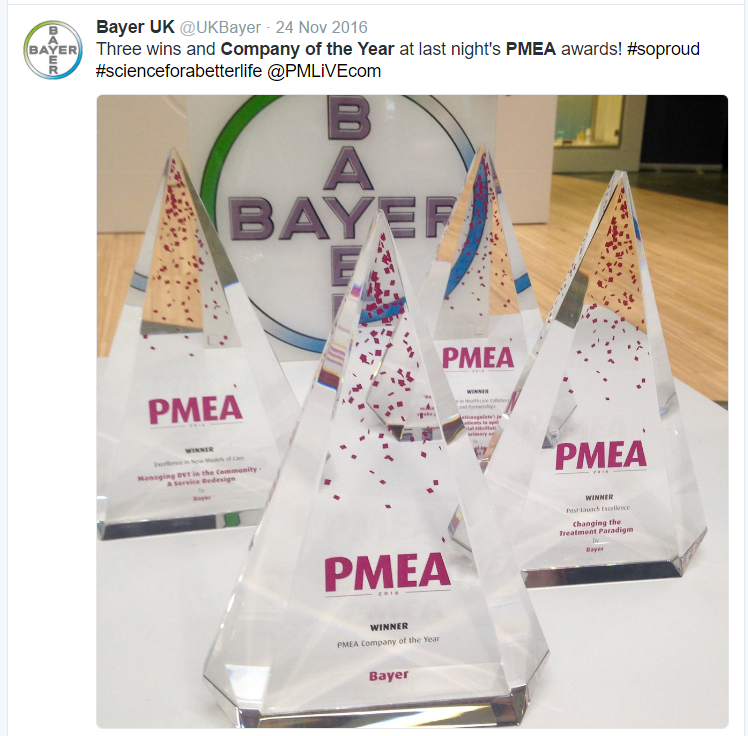
10 Reasons Why Healthcare Brands Need Social Media
Social media and healthcare as a whole captures the attention of a millions of people every day and from what we see, this will only continue to increase. Healthcare brands have started hopping on these social bandwagons and are already reaping the many benefits. In this article we explore the top 10 reasons why your healthcare brand needs to be actively involved in social media in order to stay ahead of your competitors.
1. It’s isn’t just your audience. It’s EVERYONE.
With over 1.79 billion active users across the globe, it’s GUARANTEED your target audience is somewhere in there. Thousands of healthcare communities each day have stories being shared, treatment options being recommended, and/or are increasing the qualify of life for patients and caregivers by giving them a place to be heard.
A recent story was published on NBC News in December of 2016 that showed a loving wife trying to find a cure for her husband who suffers from stage IV colon cancer. Chemotherapy didn’t work, so she turned to social media for an answer. In her search she found a Facebook group of cancer patients and their loved ones, called Colontown, where they shared their fears, stories, and the latest in medical advances for the disease. Without the means to find alternative treatment options for her husband, this could have been a very sad story, but it’s not. This is further evidence that having a social community (whether for your brand or a specific disease) could be someone’s last hope. Think on that concept for a moment.
2. Your competitors are there.
If you’re not already on social media, you better believe your competitors are. Some of these brands are already taking advantage of social media, and may have the attention of…you guessed it…your preferred audience.
Let’s take a look at two organizations that are making big impacts in their social world:
Philips Healthcare
A specialized division of Philips that is looking to “make the world healthier and more sustainable through innovation”. With its focus towards the future, they’re one step ahead with solid branded efforts on Twitter. They’ve adopted a steady content stream and created a community of like minded innovators. The brand stands to gain greater insight and information on ideas, knowledge, and consumer experience that ultimately helps propel their brand forward.

Novartis Oncology
With over 207k followers on Twitter, and over 158k followers on Facebook, Novartis is making online community management look easy. The content published on their platforms speaks to their brand as a healthcare innovator, and a brand with a heart for patients and caregivers. They not only post content that is both helpful and relevant, but also trendy, all while simultaneously posting their content more sporadically for their followers.

3.Engage directly with your audience.
Developing the right marketing strategy is truly a hard thing to do – especially in healthcare. So what better way to figure out your target audience than combing through relevant social data or engaging directly with those individuals? Getting that consumer insight could propel your marketing program/strategy in the right direction without a great deal of testing (or money spent). And while compliance can sometimes interfere with this method, try reaching out to them too! Retrieve insight from them as well, as each brand is different in their methods and compliance parameters. On a personal note, if you do go this route, be sure your team or project manager knows and make sure to not include your brand.
4. Get quality feedback.
No matter if it’s good or bad, Feedback is imperative for marketers. Even when some of the feedback isn’t necessarily the best, you can still glean insight and pivot your strategy. Without this essential piece, testing and strategy wouldn’t garner such an emphasis in online digital marketing strategies. Gathering actionable data from feedback is the difference between a well executed marketing strategy, and a marketing “endeavor.”
5. Always counter fake news or bad PR.
If you’re big into Facebook, you’ve already heard a great deal about fake news and how the platform is looking to crack down on it. Facebook revealed in December that it has begun a series of tests and experiments to limit misinformation. The tests includes making it easier for the 1.79 billion active members to report fake news, and creating partnerships with outside fact-checking organizations to help it indicate when articles are false. For healthcare brands, this will play a significant role.
According to Forbes contributor Robert Glatter, MD, “Such fake news – particularly if related to a communicable disease – may have negative side effects on patients’ emotional and physical well being and could even lead to suicidal ideation or suicide,” says Glatter [2]. Even though other medical physicians, similar to Glatter emphasize the importance of reputable news sources relying on well-sourced, verifiable information – irregardless more patients and caregivers are turning to social media and other online resources of varying quality for medical advice.
6. Test your messaging & creative.
If you’re already starting social media trials, this will be an important element for you. Having your audience assessed, targeted, and ads out on the wire – you gain a better understanding of how your message is being delivered. If it’s the wrong messaging, call-to-action, or creative, you can head back to the drawing board with new insights, and formulate a new plan of attack. Testing is key!
However, if you have a very rare disease that you’re looking to market to and desire greater reach, make sure you test small. Use only a handful of copy and creative assets that have been approved by compliance and go for it. If you test too large, your audience could be turned off by the creative they’ve already seen. Just food for thought, as more often than not – compliance generated creative often falls short of the creative departments original intent.
7. Interact with other brands – Influencer Marketing.
Influencer marketing will be HUGE in 2017 because you can reach demographics that wouldn’t have seen your brand anywhere else. A lot of the time, brands or influencers would be happy to share your content for free, however, others with larger followings (1 million+) tend to charge per post to get your message out. That being said – sometimes it’s a small price to pay to get in front of a much larger crowd.

Some other tips for influencer marketing: be sure to find an influencer that speaks your language. This can often come across as hard selling, and too often is bothersome and frowned upon when the “impression” is lost on the audience.
8. Highlight your brand’s accomplishments/awards
A no-brainer here, but healthcare marketers forget this from time to time. If your company is blowing everyone else out of the water, make sure you’re vocalizing this to your followers. It could not only position yourself in a better light, but also create more brand ambassadors for you. While they may not always mean much, consumers like to see brands awarded for effective and meaningful stewardship.

9. Educate your audience.
Educating your audience is important. The whole reason people choose to follow your brand is because you are providing them value. Education through eBooks, blogs, white papers, videos, etc. go along way because with each bit of content you are giving them, the more you are converting them towards your brand.
That being said, don’t always think you have to get something out of the content you are posting. Many healthcare brands get caught up in the activity trap, and too often ask too frequently for their audiences insights directly, or for them to convert on one of their landing pages. Providing value is all that matters, provided you want your campaigns and content to succeed.
10. Build awareness for diseases.
ALS Ice Bucket Challenge is a prime example here. Prior to this challenge Amyotrophic Lateral Sclerosis (ALS) was not a very common disease, nor was it publicized by the mainstream media. But the ALS Ice Bucket Challenge existed in the sporting world and had been used for other causes in the past. It started with a professional golfer named Chris Kennedy, who challenged his sister, Jeanette Senerchia in Pelham, New York. Jeanette’s husband Anthony has ALS. Through Facebook, one of her friends was connected to Pat Quinn in Yonkers, New York, who was connected to Pete Frates in Boston, Massachusetts. Pat and Pete are both young men battling the disease and their social networks blasted the ALS Ice Bucket Challenge out of the Northeast to places across the country and even the globe. Top business minds, celebrities and innovators participated in the challenge further spreading the challenge globally. Check out Bill Gates doing the challenge:
The popularity of the ALS Ice Bucket Challenge from that point on exploded on social media and has raised nearly $220 million and videos generating more than 10 billion views as a whole. One of the ALS Challenge co-founders, Pat Quinn, put it lightly when he told healthcare and tech executives at the Digital Health Coalition Spring Summit held April of 2016 in New York that “social media can be a very effective tool that shouldn’t be feared” [2].
The power of social media is undeniable. We understand the “fear” Pat Quinn speaks of comes from multiple places – but its roots are very simple. A lack of understanding of what social media is and how it’s used often trumps the potential gain Healthcare brands could achieve from actually utilizing it. Organizationally, moving a large corporate entity from a traditional standpoint to a digital one might be a monumental task – as formerly siloed departments might have to start talking to each other (at a minimum). But it’s neither impossible, nor should it be ignored. The tech will continue to expand and evolve, as will its users – and this includes your brand, willing or not, because your audience is watching you.
[1] https://www.statista.com/statistics/264810/number-of-monthly-active-facebook-users-worldwide/
[2] http://www.mmm-online.com/campaigns/using-humor-why-pharma-doesnt-need-to-fear-social-media/article/490211/

